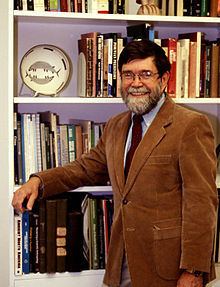World Watch As we speak: A Deep Dive Into Steven LeBlanc’s Legacy And The Enduring Energy Of Archaeology
World Watch As we speak: A Deep Dive into Steven LeBlanc’s Legacy and the Enduring Energy of Archaeology
Associated Articles: World Watch As we speak: A Deep Dive into Steven LeBlanc’s Legacy and the Enduring Energy of Archaeology
Introduction
With nice pleasure, we’ll discover the intriguing matter associated to World Watch As we speak: A Deep Dive into Steven LeBlanc’s Legacy and the Enduring Energy of Archaeology. Let’s weave fascinating info and provide contemporary views to the readers.
Desk of Content material
World Watch As we speak: A Deep Dive into Steven LeBlanc’s Legacy and the Enduring Energy of Archaeology

Steven LeBlanc, a distinguished determine in American archaeology, left behind a fancy and controversial legacy. His profession, spanning a long time of analysis and prolific publication, challenged standard knowledge, sparked heated debates, and in the end reshaped how some view the human previous. Understanding LeBlanc’s contributions requires navigating his provocative theories, his rigorous methodology, and the typically contentious reactions they elicited throughout the archaeological neighborhood. This text will discover his key concepts, inspecting each their strengths and weaknesses, and assessing their lasting influence on the sector.
LeBlanc’s work was characterised by a definite concentrate on the interaction between atmosphere, expertise, and social group. In contrast to many archaeologists who emphasised cultural evolution as a primarily inner course of, LeBlanc persistently highlighted the essential position of exterior components – notably environmental pressures and technological improvements – in shaping human societies. This emphasis on materials tradition and its influence on social constructions is maybe his most enduring contribution.
One in every of LeBlanc’s most influential works, "Prehistoric Warfare within the American Southwest," considerably altered the understanding of battle in prehistoric societies. Difficult the then-prevalent notion of peaceable, egalitarian pre-Columbian communities, LeBlanc offered compelling proof of widespread warfare, violence, and social stratification. He meticulously analyzed archaeological knowledge – together with skeletal stays exhibiting indicators of trauma, the distribution of defensive constructions, and the presence of weaponry – to argue for a extra nuanced and sometimes darker image of the previous. This work wasn’t nearly documenting violence; it aimed to know its causes and penalties, linking it to components like useful resource shortage and inhabitants density. The meticulous element and statistical evaluation he employed set a brand new commonplace for the examine of prehistoric warfare, even when a few of his conclusions stay debated.
Nonetheless, LeBlanc’s method wasn’t with out its critics. Some argued that his emphasis on warfare downplayed different features of social life, probably resulting in a skewed and overly adverse interpretation of prehistoric societies. The accusation of "hyper-militarism" – exaggerating the prevalence and significance of warfare – grew to become a recurring theme in critiques of his work. Others questioned his methodologies, notably the interpretation of skeletal trauma, arguing that different explanations for accidents existed past inter-group battle. The controversy highlights a vital challenge in archaeology: the inherent issue of reconstructing previous societies from fragmented materials stays. Interpretations are all the time topic to bias and the restrictions of the obtainable proof.
One other important space of LeBlanc’s analysis was his exploration of the connection between expertise and social complexity. He argued that technological improvements, notably these associated to meals manufacturing and useful resource exploitation, performed a vital position in driving social change. This wasn’t merely a linear development; he acknowledged the complicated suggestions loops between expertise, atmosphere, and social group. For instance, the adoption of agriculture, whereas providing elevated meals safety, additionally led to elevated inhabitants density, competitors for sources, and in the end, probably extra warfare. This angle, emphasizing the fabric circumstances of life as a major driver of social change, resonates with materialist approaches in anthropology and sociology.
LeBlanc’s work on inhabitants dynamics and its influence on social constructions additionally deserves consideration. He demonstrated a eager consciousness of the complicated interaction between inhabitants development, useful resource availability, and social group. He confirmed how inhabitants stress may result in elevated competitors, battle, and the emergence of extra hierarchical social methods. This emphasis on demographic components as a major driver of social change challenged fashions that targeted solely on cultural or ideological components.
Nonetheless, the deterministic nature of a few of LeBlanc’s arguments drew criticism. Some students argued that his emphasis on environmental and technological components minimized the position of company and human selection in shaping the previous. The critique centered on the potential for overly simplistic explanations that uncared for the complexities of human conduct and the capability for social innovation and adaptation past purely materials constraints. This stress between deterministic and agency-based explanations stays a central debate throughout the social sciences.
Past his particular analysis findings, LeBlanc’s legacy lies in his dedication to rigorous methodology and his willingness to problem established paradigms. He championed using quantitative strategies and statistical evaluation in archaeology, pushing the sector in the direction of a extra scientific and data-driven method. This emphasis on empirical proof, whereas typically controversial, has undoubtedly contributed to a better stage of sophistication in archaeological analysis.
His willingness to have interaction in mental debate, even when it meant confronting established viewpoints, is one other side of his enduring legacy. He wasn’t afraid to current controversial concepts, sparking essential dialogue and pushing the sector to re-evaluate its assumptions. Whereas this method typically led to heated exchanges throughout the tutorial neighborhood, it in the end fostered mental development and a extra dynamic subject of examine.
In conclusion, Steven LeBlanc’s contributions to archaeology are multifaceted and sophisticated. His concentrate on the interaction between atmosphere, expertise, and social group, his meticulous evaluation of prehistoric warfare, and his emphasis on quantitative strategies have left an indelible mark on the sector. Whereas his interpretations and conclusions have been topic to debate and criticism, his work has undeniably stimulated essential pondering, superior methodological rigor, and broadened our understanding of the human previous. His legacy serves as a reminder that archaeology just isn’t merely about uncovering artifacts however about decoding the complexities of human historical past, a activity that inevitably entails each rigorous evaluation and sometimes contentious debate. The continuing discussions surrounding his work spotlight the dynamic and evolving nature of archaeological inquiry, guaranteeing that LeBlanc’s contributions stay related and stimulating for future generations of students.








Closure
Thus, we hope this text has offered helpful insights into World Watch As we speak: A Deep Dive into Steven LeBlanc’s Legacy and the Enduring Energy of Archaeology. We thanks for taking the time to learn this text. See you in our subsequent article!